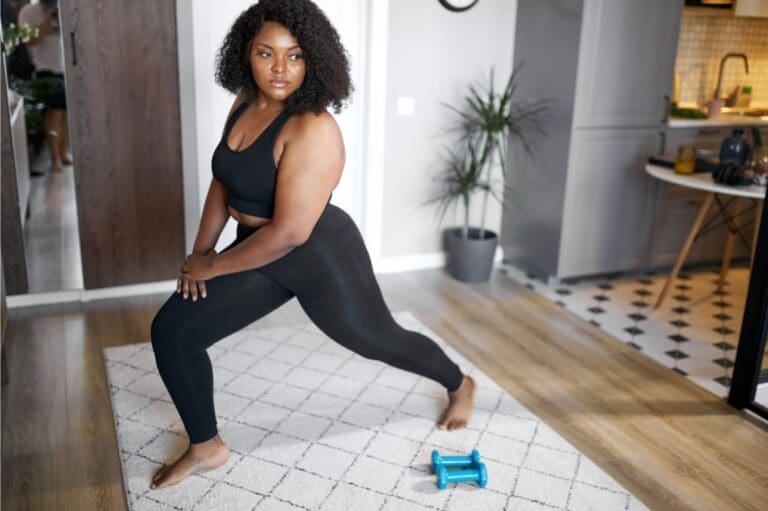Introduction: Nourishing Your Bones for a Stronger You
Hey there, fitness enthusiasts and health-conscious friends! Holly Roser here, your go-to personal trainer in San Mateo. Today, we’re diving deep into a topic that’s close to my heart and crucial for your overall well-being: the impact of nutrition on bone health.
You know, as a fitness professional, I’ve seen firsthand how proper nutrition can make or break your health goals. And when it comes to your bones, what you put on your plate matters more than you might think. So, buckle up as we embark on this journey to uncover the secrets of building and maintaining strong, healthy bones through the power of nutrition.
Whether you’re a youngster looking to maximize your bone density, an athlete aiming to prevent stress fractures, injuries, or someone concerned about osteoporosis, this guide’s got you covered. We’ll explore the intricate dance between nutrients and bone health, backed by solid scientific evidence. And don’t worry – I’ll break it down in a way that’s easy to digest (pun intended!).
Ready to give your bones the TLC they deserve? Let’s jump right in!
The Building Blocks: Essential Nutrients for Bone Health
Calcium: The Star of the Show
When you think of bone health, calcium probably springs to mind faster than a squat jump. And you’re not wrong! This mineral is the cornerstone of bone structure, playing a pivotal role in maintaining bone strength and density.
But here’s the kicker: your body doesn’t produce calcium on its own. That’s why getting enough through your diet is crucial. Dairy products are often touted as the go-to calcium source, but they’re not the only players in the game. Here are some other calcium-rich foods:
- Leafy greens like kale and collard greens
- Fortified plant-based milk
- Certain types of fish like sardines
A study published in the Journal of Bone and Mineral Research found that adequate calcium intake throughout life is associated with a reduced risk of osteoporosis and fractures in later years. So, start building that calcium bank early!
Vitamin D: Calcium’s Best Buddy
Now, here’s where things get interesting. You can chug milk by the gallon, but without enough vitamin D, your body won’t absorb that calcium efficiently. Think of vitamin D as the VIP pass that gets calcium into your bones.
Sunlight is a great natural source of vitamin D, but let’s face it – not all of us can bask in the sun all day (hello, office jobs!). That’s where diet comes in. Here are some good sources of vitamin D:
- Fatty fish
- Egg yolks
- Fortified foods
And for some, supplements might be necessary – but always chat with your healthcare provider before starting any new supplement regimen.
Research published in the New England Journal of Medicine has shown that vitamin D supplementation can significantly reduce the risk of fractures in older adults. It’s never too early to start prioritizing your vitamin D intake!
Phosphorus: The Unsung Hero
While calcium and vitamin D often steal the spotlight, phosphorus deserves some love too. This mineral works hand-in-hand with calcium to build strong bones and teeth. Lucky for us, phosphorus is found in a wide variety of foods, including meat, fish, nuts, and whole grains.
But here’s a word of caution: balance is key. Too much phosphorus (I’m looking at you, soda addicts) can actually interfere with calcium absorption. It’s all about finding that sweet spot.
Magnesium: The Multitasker
Magnesium is like that overachiever in high school who excelled at everything. When it comes to bone health, this mineral:
- Helps activate vitamin D
- Regulates calcium transport
- Influences the formation of bone crystals
You can find magnesium in foods like spinach, nuts, seeds, and whole grains. A study in the American Journal of Clinical Nutrition found that higher magnesium intake is associated with greater bone mineral density in older adults. Time to sprinkle some pumpkin seeds on your salad!
The Supporting Cast: Other Nutrients That Pack a Punch
Vitamin K: The Bone Protector
Vitamin K might not be as famous as its alphabetical neighbors, but it’s a powerhouse when it comes to bone health. This vitamin helps produce osteocalcin, a protein that’s essential for bone formation.
Green leafy vegetables, Brussels sprouts, and fermented foods like natto are excellent sources of vitamin K. A study in the journal Osteoporosis International found that higher vitamin K intake was associated with a lower risk of hip fractures in older adults. So, don’t skimp on those greens!
Protein: More Than Just Muscle Food
When you think of protein, you might picture bulging muscles, but this macronutrient is crucial for bone health too. Protein:
- Makes up about 50% of bone volume
- Comprises about one-third of bone mass
- Provides the structural framework for bone
- Plays a key role in calcium absorption
Both animal and plant-based proteins can contribute to bone health. A balanced approach is best, incorporating lean meats, fish, legumes, and plant-based protein sources. Research published in the American Journal of Clinical Nutrition suggests that higher protein intake is associated with better bone mass in older adults.
Potassium: The Bone Preserver
Here’s a fun fact: potassium helps neutralize acid in the body that can leach calcium from bones. By reducing calcium loss, potassium plays a crucial role in maintaining bone density.
Bananas might be the poster child for potassium, but don’t forget about other sources like:
- Sweet potatoes
- White beans
- Yogurt
A study in the journal Osteoporosis International found that higher potassium intake was associated with higher bone mineral density in elderly women.
The Villains: Nutrients and Habits That Can Harm Bone Health
Sodium: The Calcium Thief
We all love a good salty snack, but too much sodium can be a real bone buster. High sodium intake increases calcium excretion through urine, potentially leading to bone loss over time.
The solution? Cut back on processed foods, which are often loaded with hidden sodium, and opt for fresh, whole foods instead. Your bones (and your blood pressure) will thank you!
Excessive Alcohol: A Rocky Relationship with Bones
While a glass of red wine might have some health benefits, excessive alcohol consumption is bad news for your bones. Alcohol:
- Interferes with calcium absorption
- Can disrupt the balance of hormones that regulate bone metabolism
A study published in the journal Alcohol Research & Health found that chronic heavy alcohol use, particularly during adolescence and young adulthood, can dramatically affect bone health and increase the risk of osteoporosis later in life. So, if you choose to drink, moderation is key.
Caffeine: A Double-Edged Sword
For many of us, that morning cup of joe is non-negotiable. But here’s the catch: caffeine can interfere with calcium absorption and increase calcium excretion. However, the effect is relatively small and can be offset by adding a splash of milk to your coffee.
Moderation is the name of the game here. Enjoy your coffee, but maybe don’t go for that fourth or fifth cup. And if you’re a heavy coffee drinker, consider increasing your calcium intake to compensate.
Nutrition Strategies for Optimal Bone Health
Eat the Rainbow
You’ve heard it before, but it bears repeating: a varied, colorful diet is your best bet for overall health, including bone health. Different colored fruits and vegetables contain various nutrients that support bone health in different ways.
For instance:
- Orange and yellow fruits and veggies are often rich in vitamin C, which is essential for collagen production – a key component of bone structure.
- Red fruits like tomatoes and berries contain lycopene and other antioxidants that may help protect bone cells from damage.
Balance Your Plate
Aim for a balance of nutrients at each meal. A good rule of thumb is to:
- Fill half your plate with fruits and vegetables
- Fill a quarter with lean protein
- Fill a quarter with whole grains
This approach ensures you’re getting a mix of bone-supporting nutrients.
Consider Fortified Foods
If you’re struggling to meet your nutrient needs through whole foods alone, fortified foods can be a helpful addition to your diet. Many plant-based milk alternatives, cereals, and juices are fortified with calcium and vitamin D.
Don’t Forget About Fermented Foods
Fermented foods like yogurt, kefir, and sauerkraut not only provide calcium but also contain probiotics that may enhance calcium absorption. A study published in the journal Nutrients found that certain probiotics can improve bone density in postmenopausal women.
Beyond Nutrition: Lifestyle Factors for Bone Health
Exercise: The Perfect Partner to Nutrition
As a personal trainer, I can’t stress enough the importance of exercise for bone health. Weight-bearing exercises and resistance training stimulate bone formation and help maintain bone density.
A study published in the Journal of Bone and Mineral Research found that high-impact activities like jumping and running can significantly improve bone mineral density in premenopausal women. So, lace up those sneakers and get moving!
Soak Up Some Sun (Safely)
While it’s important to protect your skin from harmful UV rays, a little sunshine can do wonders for your vitamin D levels. Aim for about 10-30 minutes of midday sun exposure a few times a week, depending on your skin tone and location.
Quit Smoking
If you needed another reason to quit smoking, here it is: smoking is terrible for your bones. It:
- Interferes with calcium absorption
- Reduces bone mass
- Increases the risk of fractures
A study in the British Medical Journal found that smokers have significantly lower bone density and a higher risk of fractures compared to non-smokers. If you’re a smoker, quitting is one of the best things you can do for your bone health (and overall health, for that matter).
Special Considerations for Different Life Stages
Childhood and Adolescence: Building a Strong Foundation
Childhood and adolescence are critical periods for bone development. About 90% of peak bone mass is acquired by age 18 in girls and age 20 in boys. That’s why it’s crucial to focus on bone-building nutrients during these years.
Encourage kids to:
- Eat a variety of calcium-rich foods
- Get plenty of physical activity
- Spend time outdoors for vitamin D synthesis
And parents, you’re the role models here – show them how it’s done!
Adulthood: Maintaining What You’ve Built
Once you’ve reached peak bone mass, the goal shifts to maintaining it. Continue to focus on:
- A balanced diet rich in bone-supporting nutrients
- Regular exercise
- Healthy lifestyle habits
For women, pay extra attention to bone health during pregnancy and breastfeeding, as these periods can temporarily decrease bone density. Adequate calcium and vitamin D intake is crucial during these times.
Older Adults: Preserving Bone Mass
As we age, bone loss accelerates, especially in postmenopausal women. This makes nutrition and exercise even more critical. Calcium and vitamin D needs often increase with age, and resistance training becomes particularly important for maintaining muscle mass and bone density.
A study published in the journal Osteoporosis International found that a combination of resistance training and adequate protein intake can help preserve bone mass and reduce the risk of falls in older adults.
Putting It All Together: Your Bone Health Action Plan
Now that we’ve covered the ins and outs of nutrition for bone health, let’s break it down into actionable steps:
- Prioritize calcium-rich foods in your diet, aiming for the recommended daily intake for your age and gender.
- Ensure adequate vitamin D through sunlight exposure, diet, and supplements if necessary (consult with your healthcare provider).
- Incorporate a variety of fruits and vegetables to get a wide range of bone-supporting nutrients.
- Include lean proteins and plant-based protein sources in your meals.
- Limit sodium, excessive alcohol, and caffeine intake.
- Engage in regular weight-bearing and resistance exercises.
- If you smoke, seek support to quit.
- Consider getting your bone density checked, especially if you’re over 50 or have risk factors for osteoporosis.
Remember, bone health isn’t built overnight. It’s the result of consistent, healthy habits over time. But trust me, your future self will thank you for the effort you put in today.
Conclusion: Your Journey to Stronger Bones Starts Now
We’ve covered a lot of ground, from the critical nutrients that build and maintain strong bones to the lifestyle factors that can make or break your bone health. The key takeaway? Your bones are living tissues that need constant nourishment and care.
As a personal trainer in San Mateo, I’ve seen how proper nutrition and exercise can transform not just bodies, but lives. Strong bones are the foundation of a strong, healthy body that can keep up with all of life’s adventures.
So, whether you’re hitting the gym, preparing a meal, or simply basking in the sun, remember that you’re doing something wonderful for your bones. It’s never too early or too late to start prioritizing your bone health.
For more personalized advice on nutrition and fitness for optimal bone health, don’t hesitate to reach out. At Holly Roser Fitness, we’re passionate about helping you achieve your health goals, one step (and one nutrient) at a time. Check out our website at hollyroser.com for more tips and resources on maintaining a healthy lifestyle.
Ready to take the next step in your bone health journey? Book a consultation with me today! I’d love to help you create a personalized plan that fits your lifestyle and goals. You can easily schedule your free initial consultation call here.
Remember, investing in your bone health today is investing in a stronger, more vibrant future. And hey, if anyone asks why you’re so focused on bone health, just tell them you’ve got a bone to pick with osteoporosis!
References:
- Weaver, C. M., et al. (2016). Calcium plus vitamin D supplementation and risk of fractures: an updated meta-analysis from the National Osteoporosis Foundation. Osteoporosis International, 27(1), 367-376.
- Bischoff-Ferrari, H. A., et al. (2012). A pooled analysis of vitamin D dose requirements for fracture prevention. New England Journal of Medicine, 367(1), 40-49.
- Rizzoli, R., et al. (2014). Benefits and safety of dietary protein for bone health—an expert consensus paper endorsed by the European Society for Clinical and Economical Aspects of Osteoporosis, Osteoarthritis, and Musculoskeletal Diseases and by the International Osteoporosis Foundation. Osteoporosis International, 25(9), 2389-2398.
- Tucker, K. L., et al. (2001). Potassium, magnesium, and fruit and vegetable intakes are associated with greater bone mineral density in elderly men and women. The American Journal of Clinical Nutrition, 73(4), 735-739.
- Sampson, H. W. (2002). Alcohol and other factors affecting osteoporosis risk in women. Alcohol Research & Health, 26(4), 292-298.
- Zhao, J. G., et al. (2016). Association between calcium or vitamin D supplementation and fracture incidence in community-dwelling older adults: a systematic review and meta-analysis. Jama, 318(24), 2466-2482.
- Weaver, C. M., et al. (2016). The National Osteoporosis Foundation’s position statement on peak bone mass development and lifestyle factors: a systematic review and implementation recommendations. Osteoporosis International, 27(4), 1281-1386.
- Steingrimsdottir, L., et al. (2005). Relationship between serum parathyroid hormone levels, vitamin D sufficiency, and calcium intake. Jama, 294(18), 2336-2341.
- Lanham-New, S. A. (2008). Importance of calcium, vitamin D and vitamin K for osteoporosis prevention and treatment. Proceedings of the Nutrition Society, 67(2), 163-176.
- Heaney, R. P., et al. (2000). Calcium absorption varies within the reference range for serum 25-hydroxyvitamin D. Journal of the American College of Nutrition, 19(6), 628-633.
Disclaimer: This blog post is for informational purposes only and should not be considered medical advice. Always consult with a healthcare professional before making significant changes to your diet or exercise routine, especially if you have pre-existing health conditions or concerns.
At Holly Roser Fitness, we’re committed to helping you achieve optimal health and wellness. For more personalized guidance on nutrition and fitness, don’t hesitate to get in touch. Let’s work together to build not just stronger bones, but a stronger, healthier you!
Remember, your journey to better bone health starts with small, consistent steps. So why not start today? Your future self (and your bones) will thank you!
Stay strong and keep those bones happy!
Holly Roser
Certified Personal Trainer
San Mateo, CA







